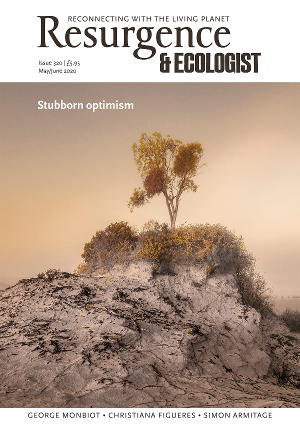Red Admiral, Purple Emperor, Green Hairstreak, Orange-tip, Clouded Yellow: butterfly and moth names seem caught in poetry, but Peter Marren wanted to know how these names came to be, reasoning that “knowledge of how and why a species acquired its name can deepen our interest and understanding of these most lovely of insects.” So off he set with his metaphorical net to snare the stories behind the names: the kittens and the prominents, the tussocks and the footmen.
Marren first asks how the genus got its name. Aristotle gave the butterfly the name psuche, which is the same word in ancient Greek as ‘soul’ or ‘spirit’; and as he knew something of a butterfly’s lifecycle, one may conclude that the philosopher saw in the caterpillar the equivalent of our earthly existence, and in the butterfly, spirit released from that body. Marren’s own research into why the butterfly is so called is equally fascinating: is it because it likes butter? Or because the first heralds of spring are the butter-coloured brimstones? Or is it because they appear in the butter season, when the grass has grown long? Marren concludes that it is none of these. He suggests the name ‘butterfly’ originates from the fly that bothers us the most: the cabbage white, which damages crops and is a ‘bother-fly’.
The moth shares its root name with ‘maggot’, and the word ‘moth’ was originally given to almost any small pest, particularly those that chewed up domestic items, like the clothes moth. It is likely that the caterpillar got its name from the Norman French word chatepelose – ‘hairy cat’! Marren notes that it is peculiarly English to differentiate butterflies from moths (as we do mushrooms from toadstools); in other countries, they are all the linguistic equivalent of papilios.
Part One of this exquisitely illustrated book continues in this vein, looking at the emergence of Latin names and classification systems, eminent entomologists and Victorian collectors, but it is Part Two that fascinated me the most because this is where Marren dives into the derivation of the weird and wonderful names of various species. In alphabetical order he looks at the arches and beauties, the carpets, clouds and dancers, the darts, deaths, drunkards and dukes. It is a veritable orgy of etymology! With the drunkards, you would perhaps expect the Oinophila or ‘wine-lover’ moth to be rather fond of the bottle, but it is the caterpillar’s taste for the cork that gives this moth its name, whereas the actual cork moth is misnamed, because it chews bracket fungi, which are not cork.
Fabrics turn up often in the names of moths. The elaborate patterns of brocades worn by wealthy Victorian women are reflected in the names of moths discovered in that era: the Great Brocade and the Light Brocade, the Pale-shouldered Brocade and the Beautiful Brocade, whose wing-patterns reminded people of the contemporary shuttle-woven fabrics of the time. But, etymologically speaking, my favourite has to be the moth with hermit tendencies. The Scarce Chocolate-tip moth has a caterpillar that prefers to be alone. The species is named for anachoreta, the anchorite – “one who has withdrawn from the world, opting to spend his days in religious contemplation inside a bare, uncomfortable cell – or in this case, a bundle of leaves spun together with silk”. How beautiful is that?
A book to treasure and return to time and again, this tome will undoubtedly become a classic for the quality of its research and detail, for its humour and because the author so obviously admires these most lovely of insects.






